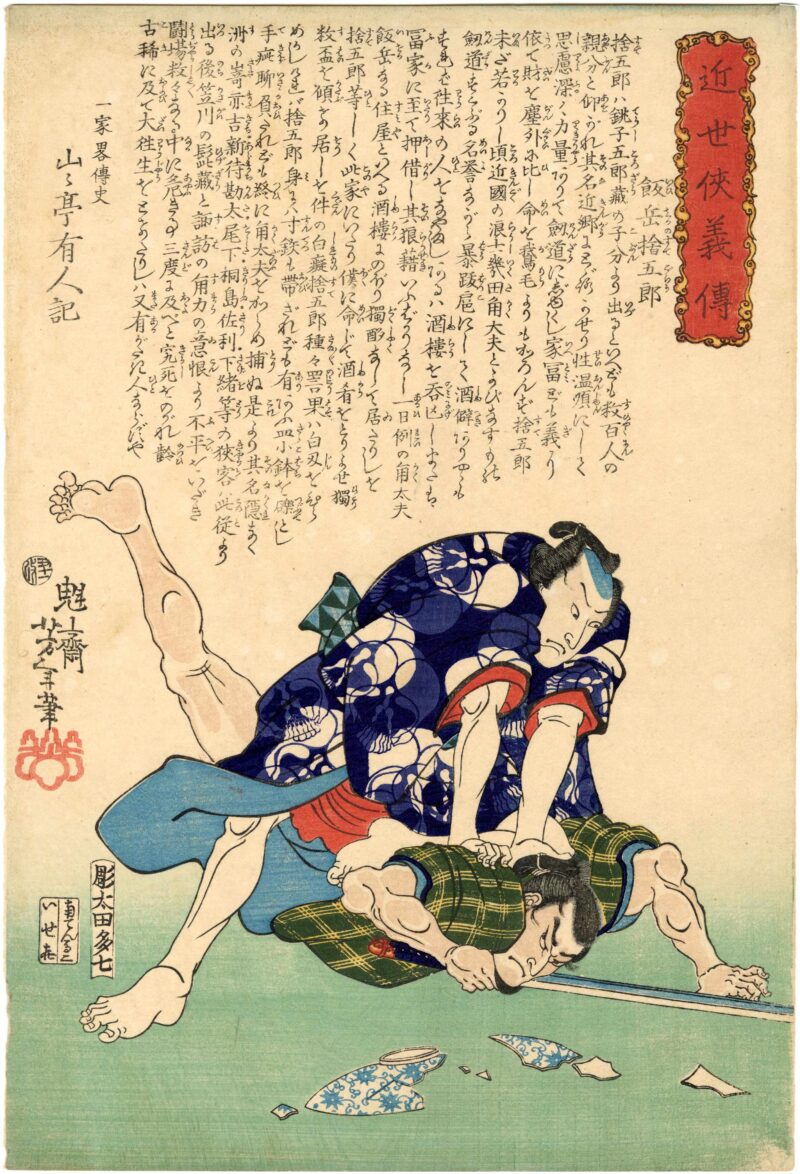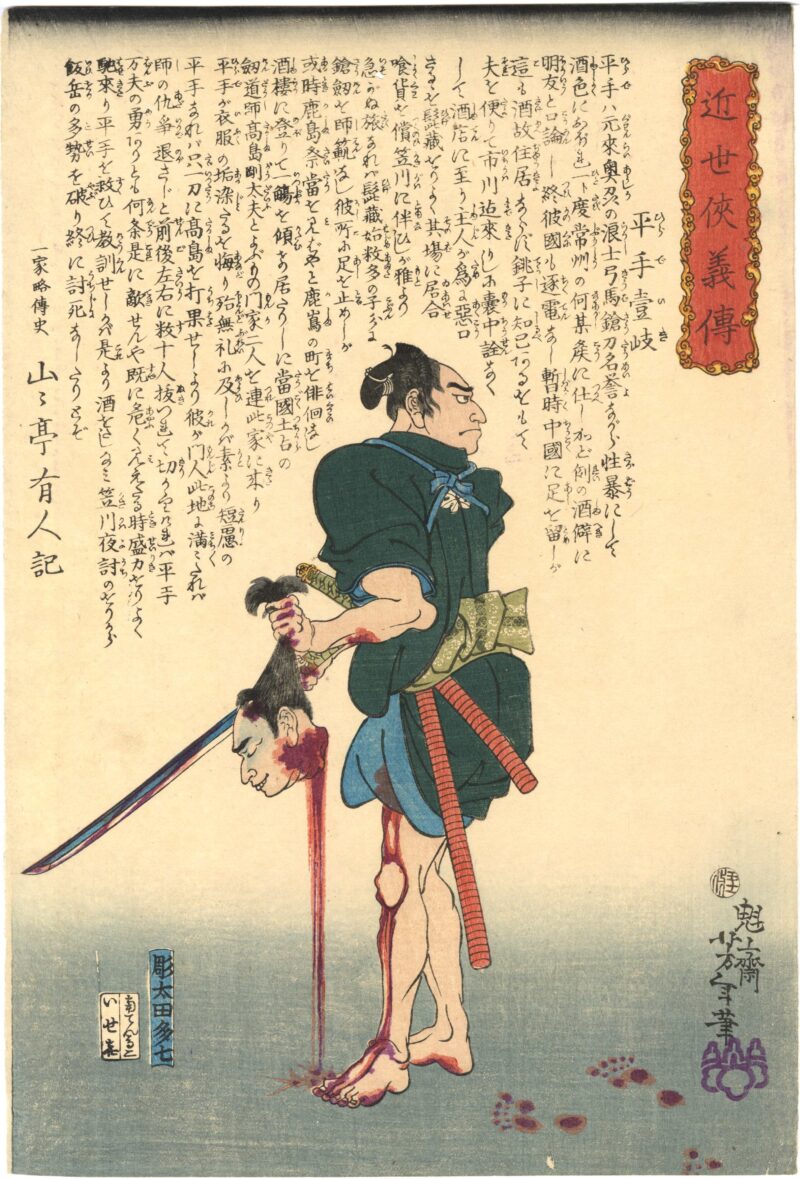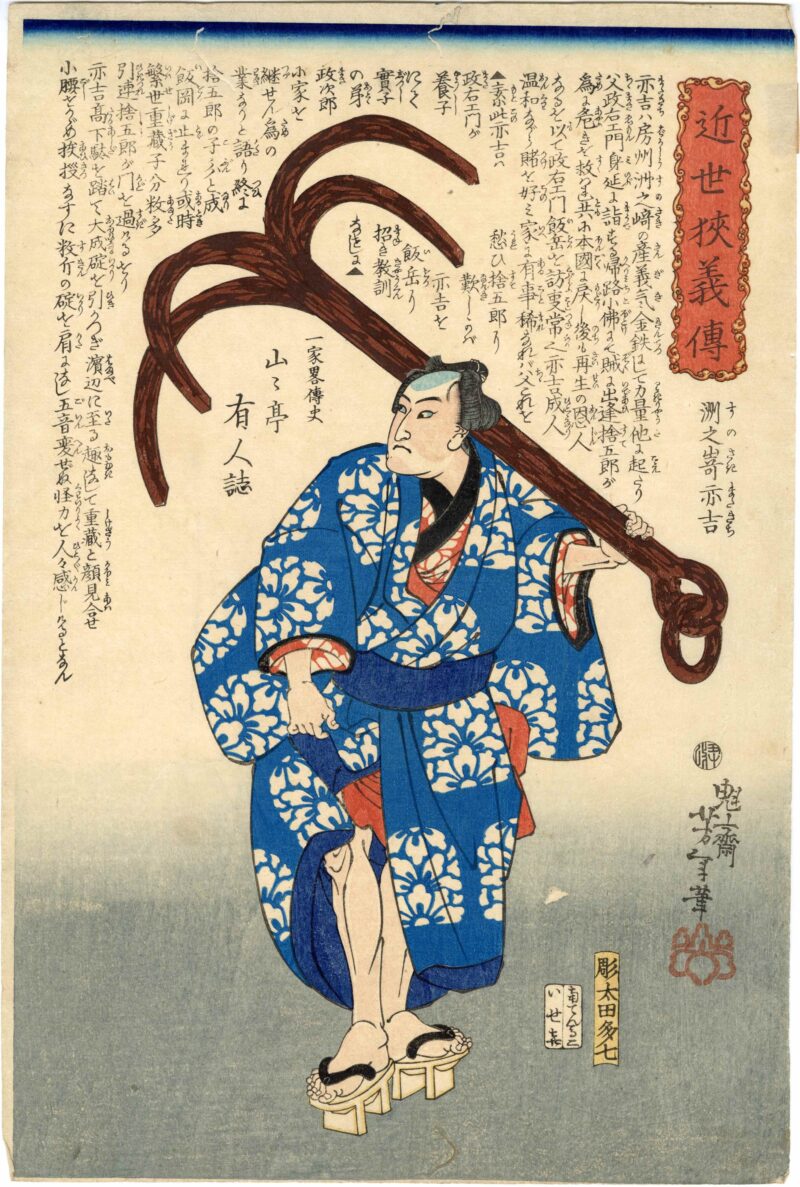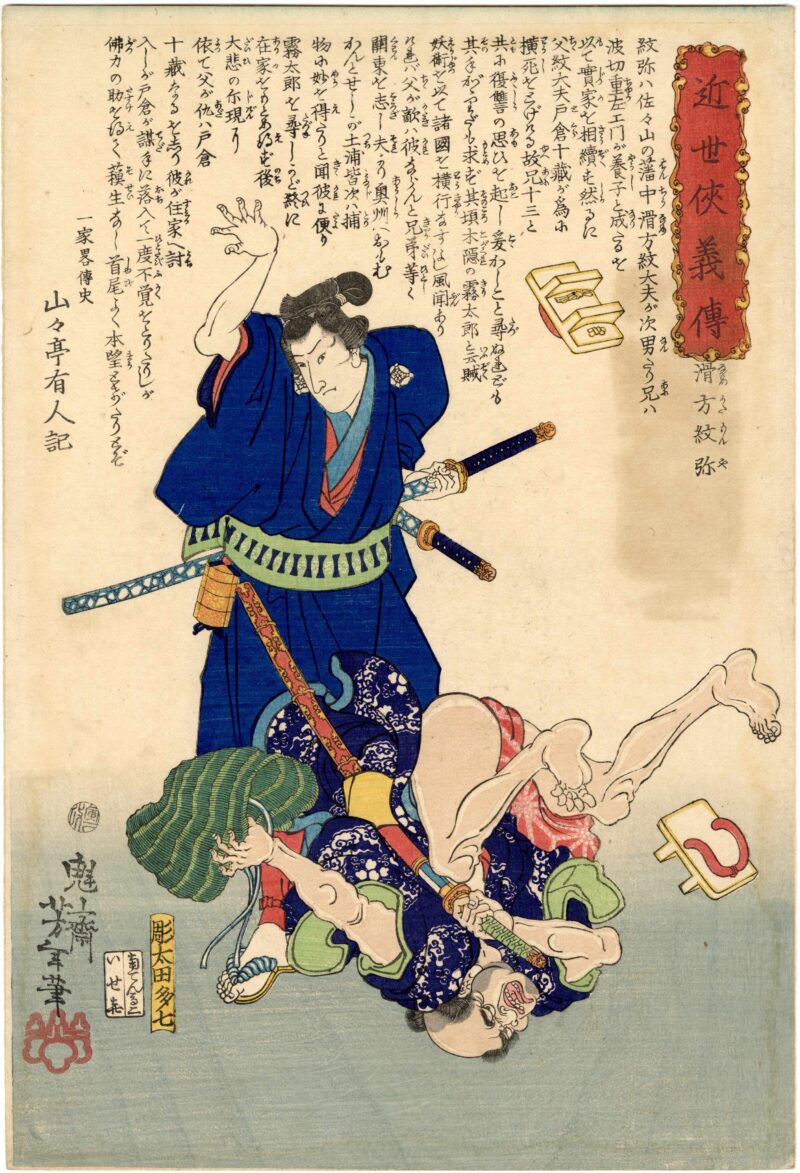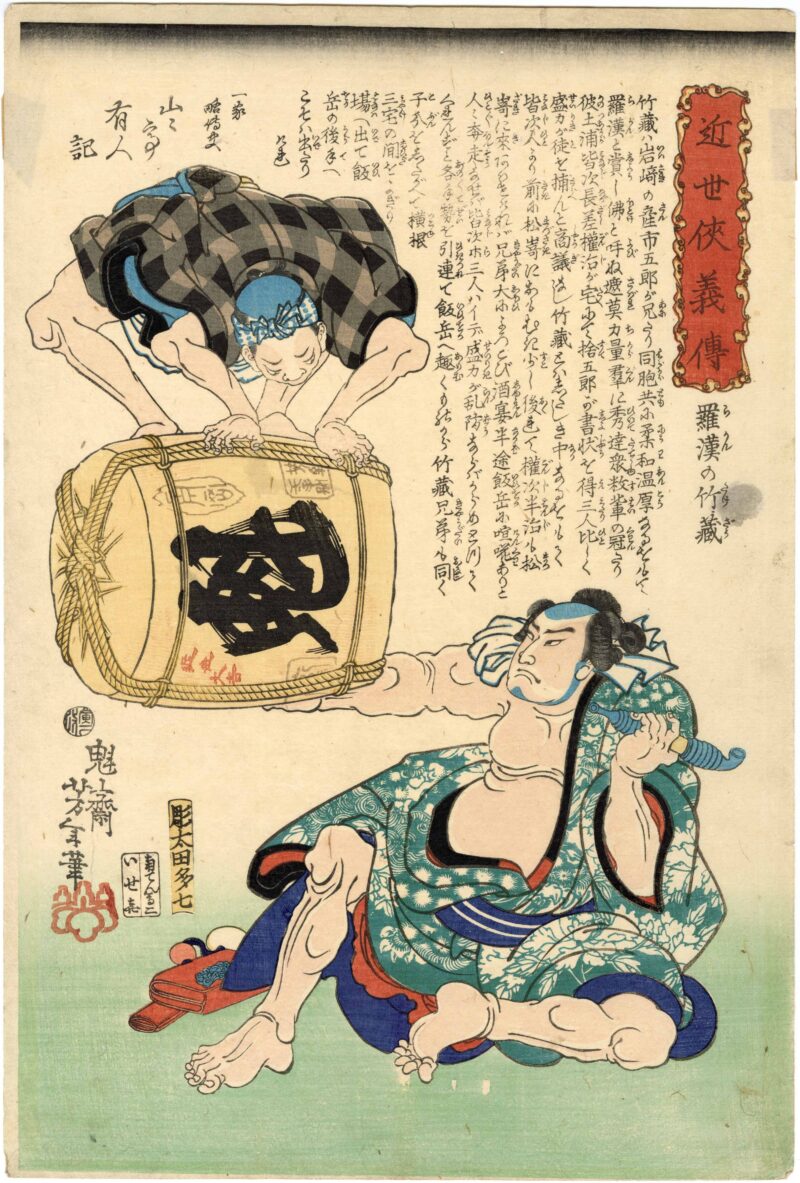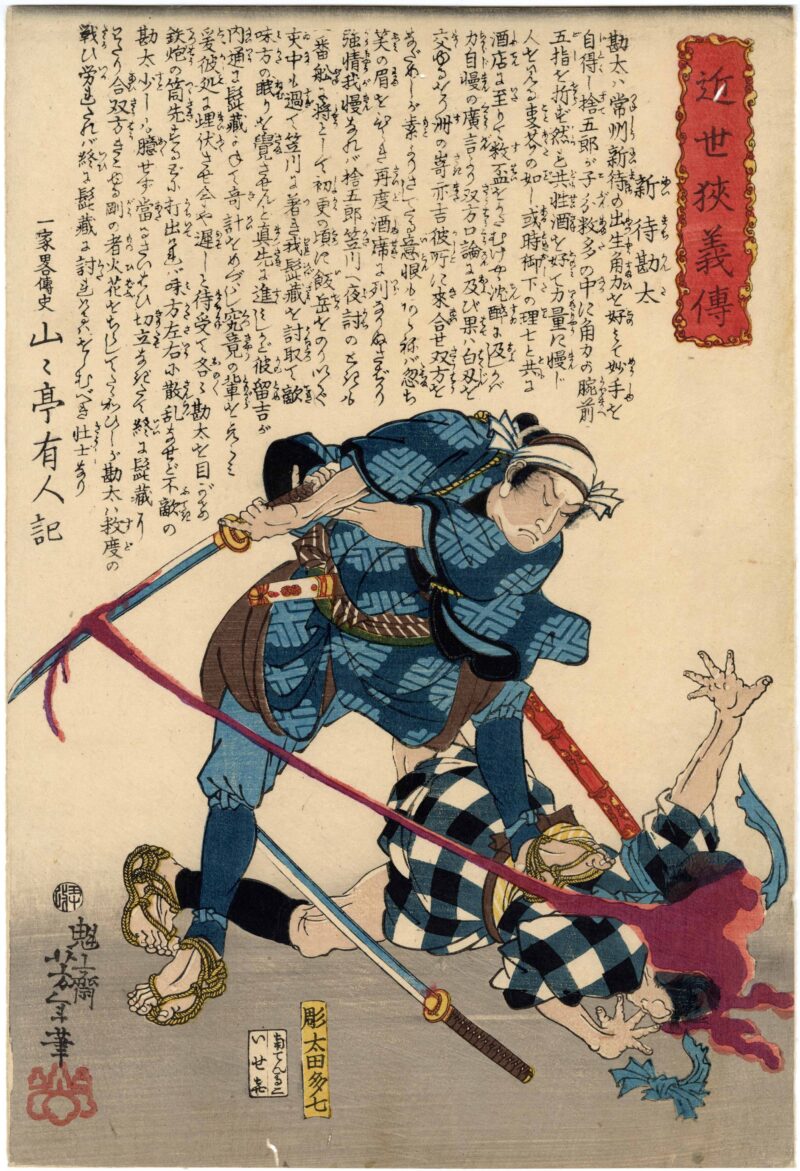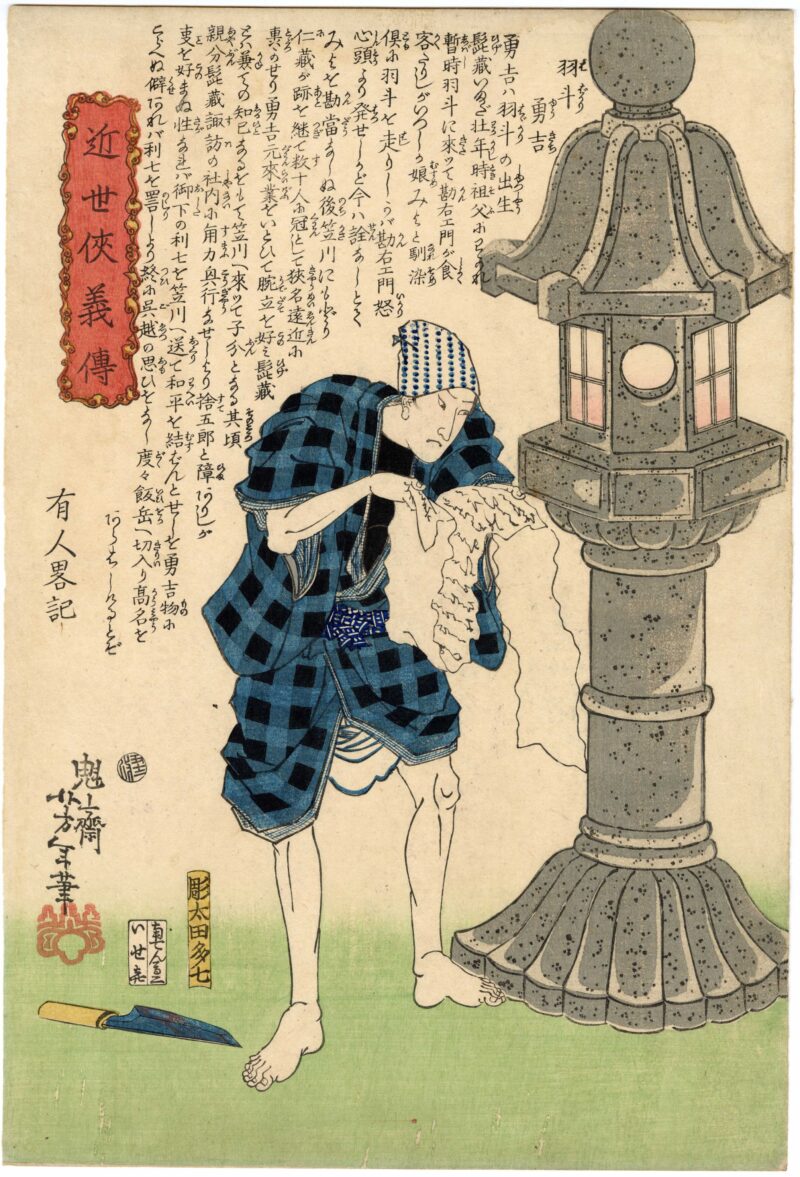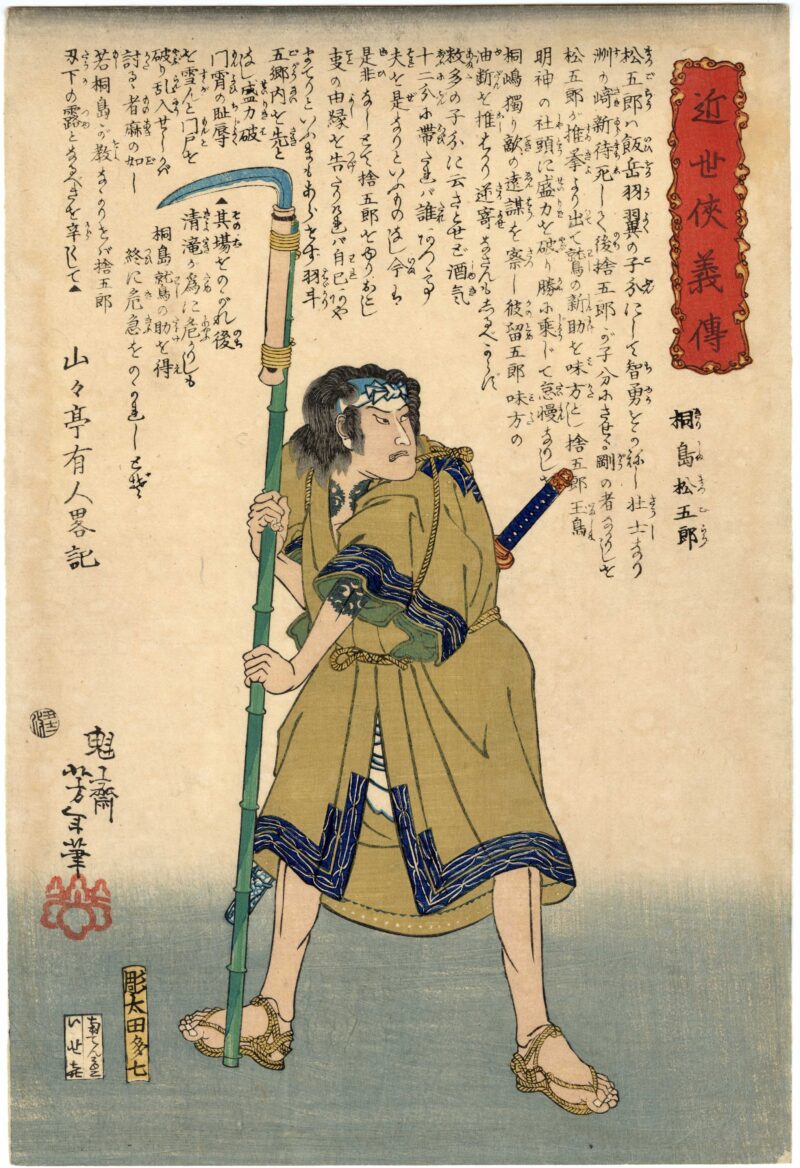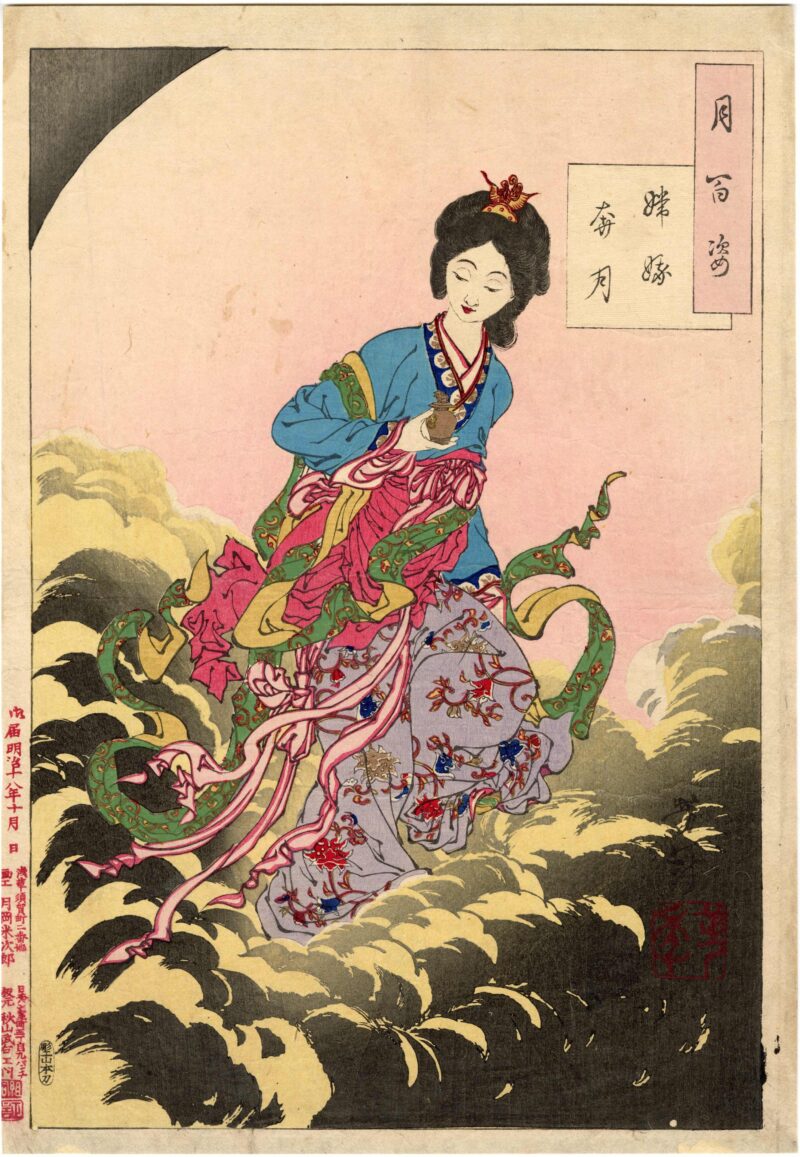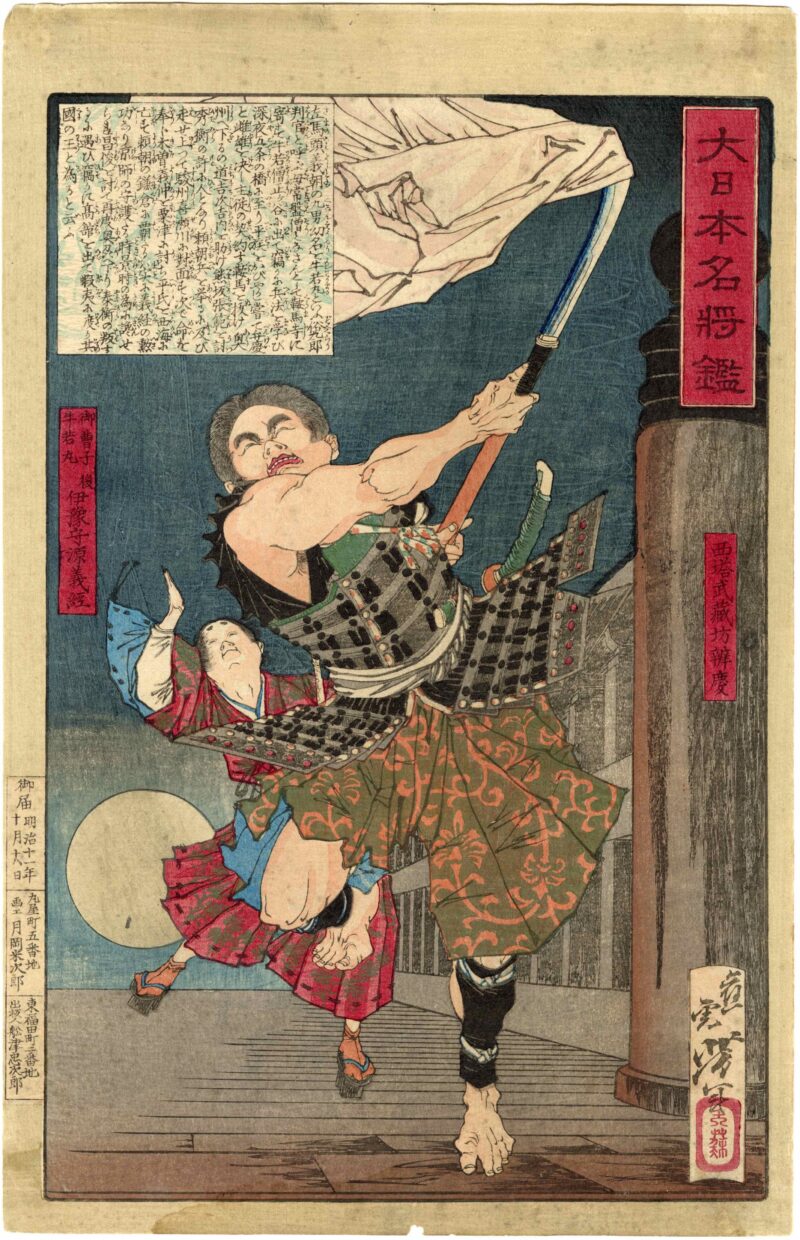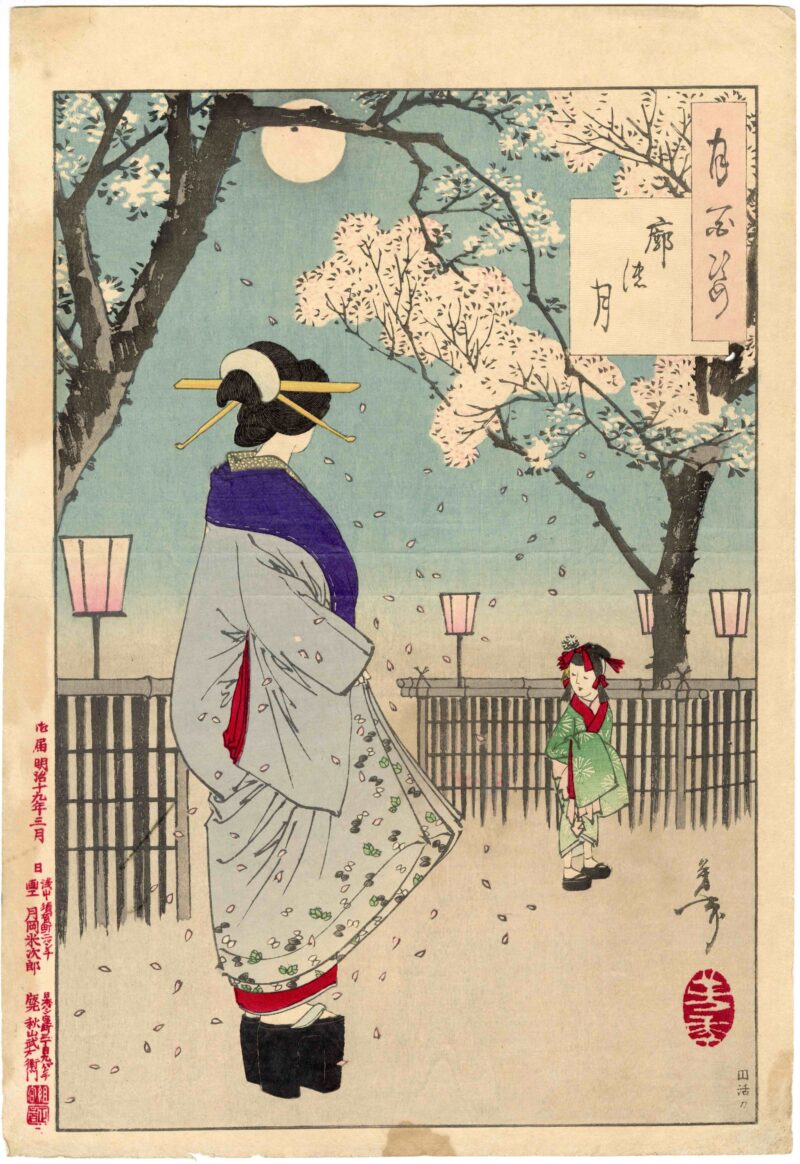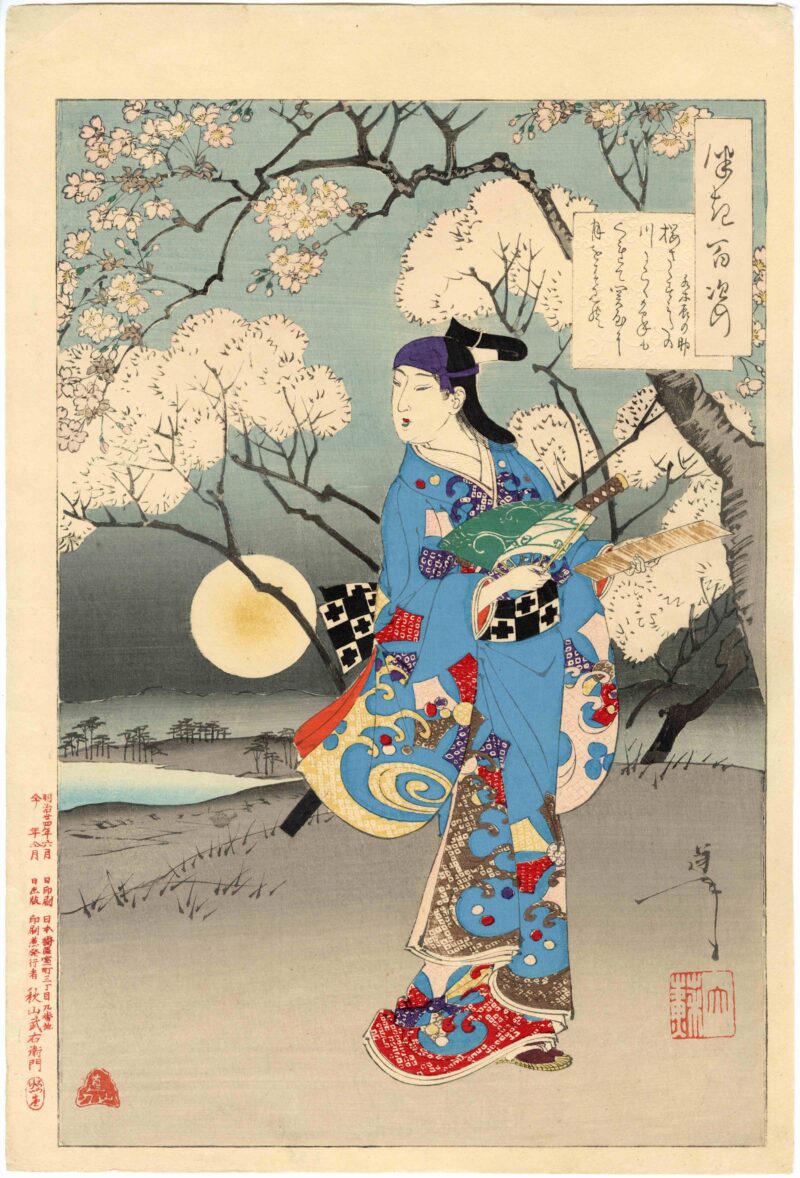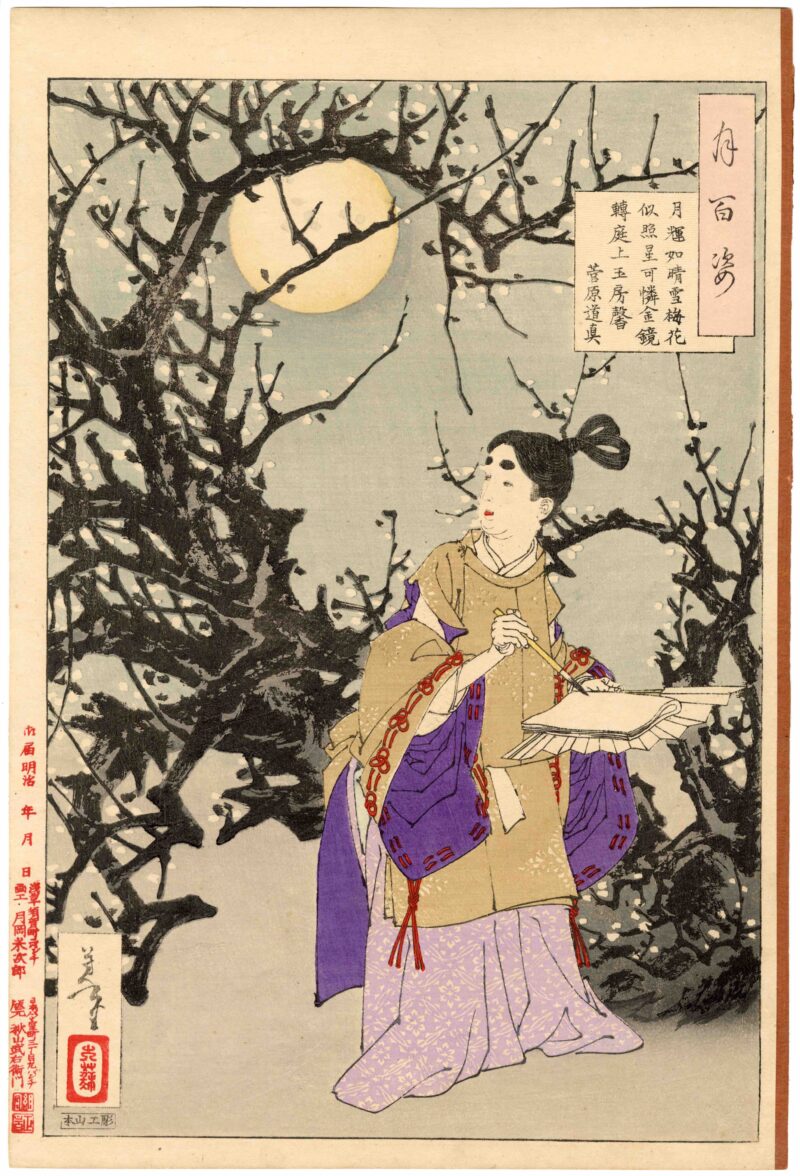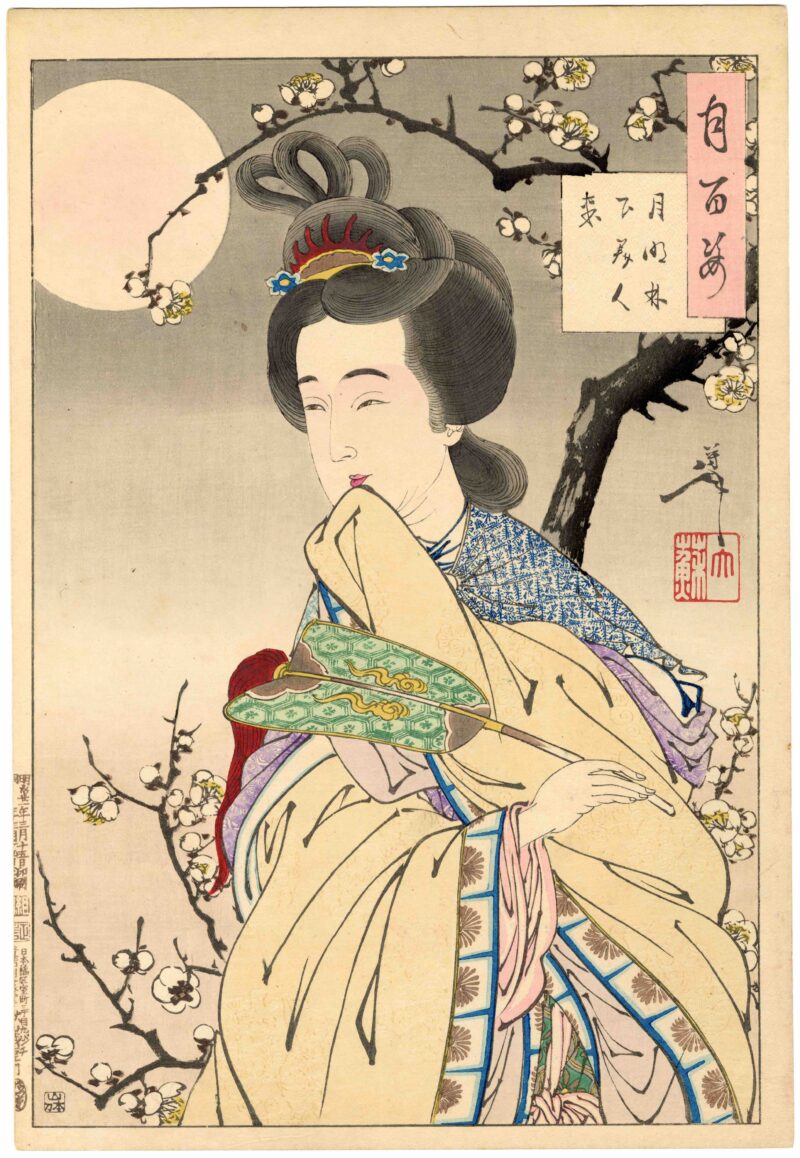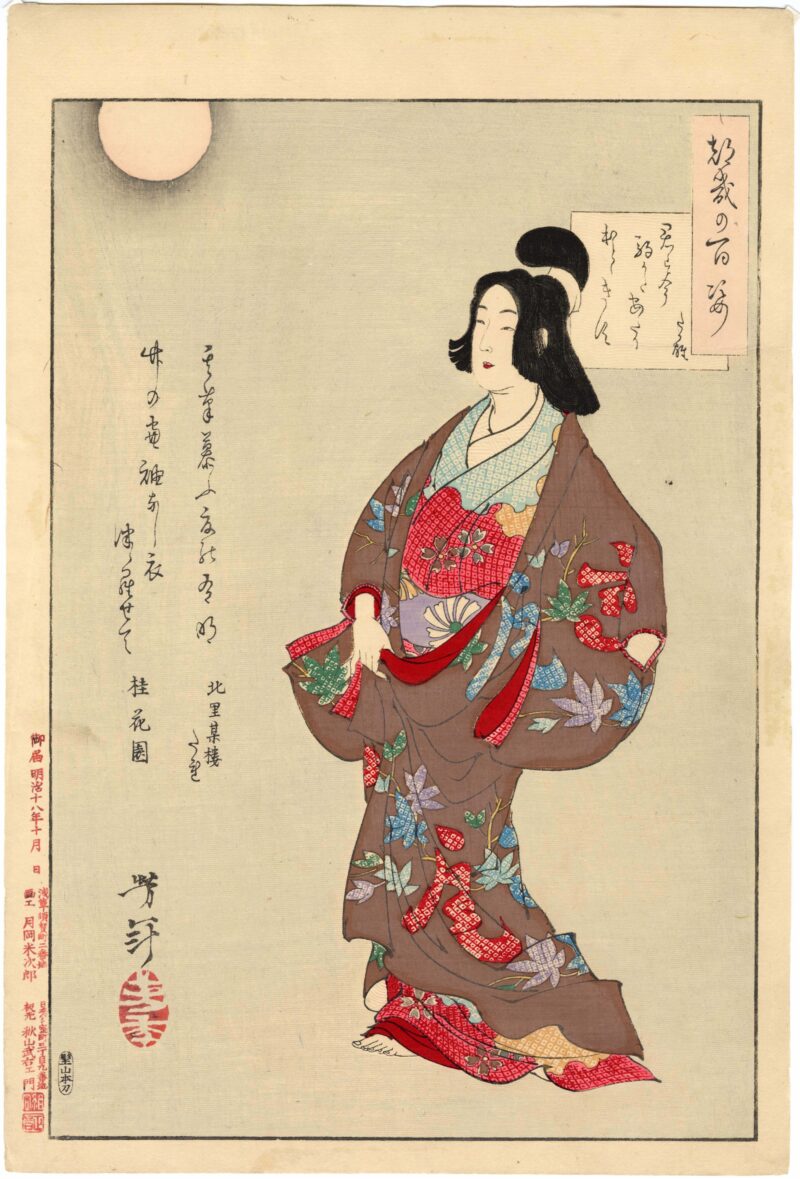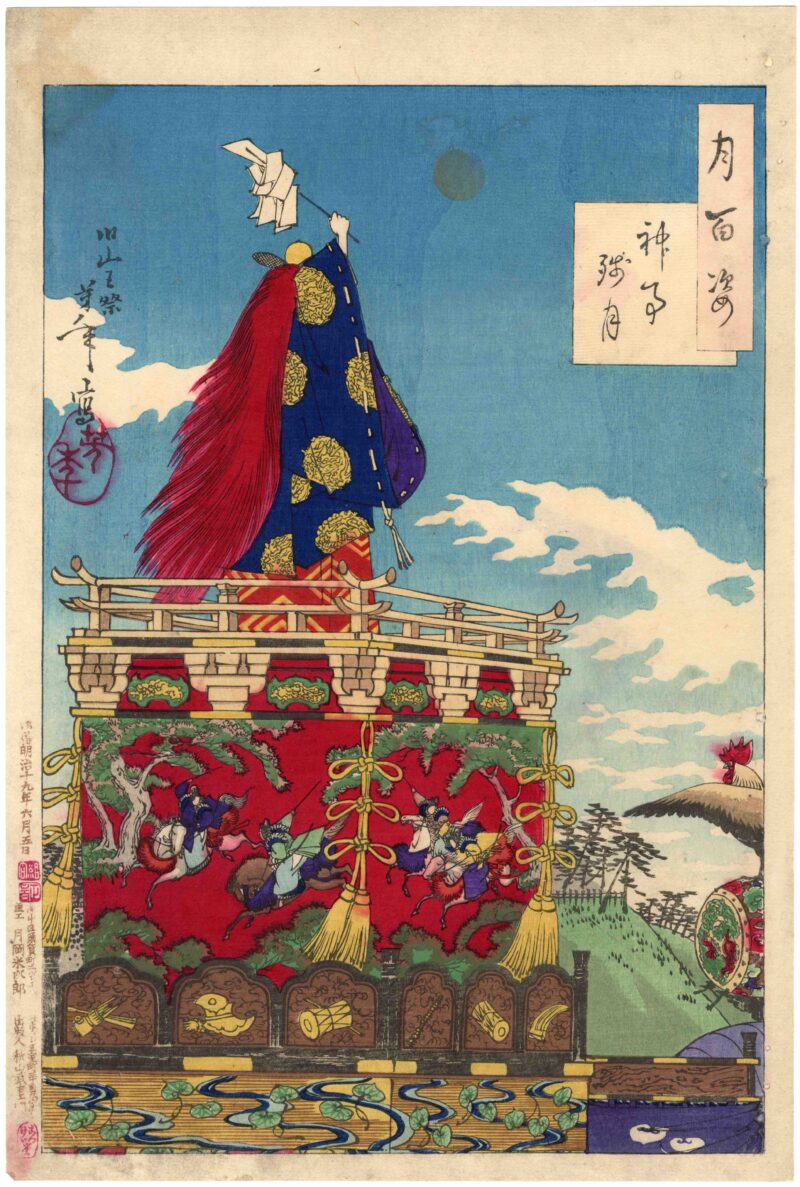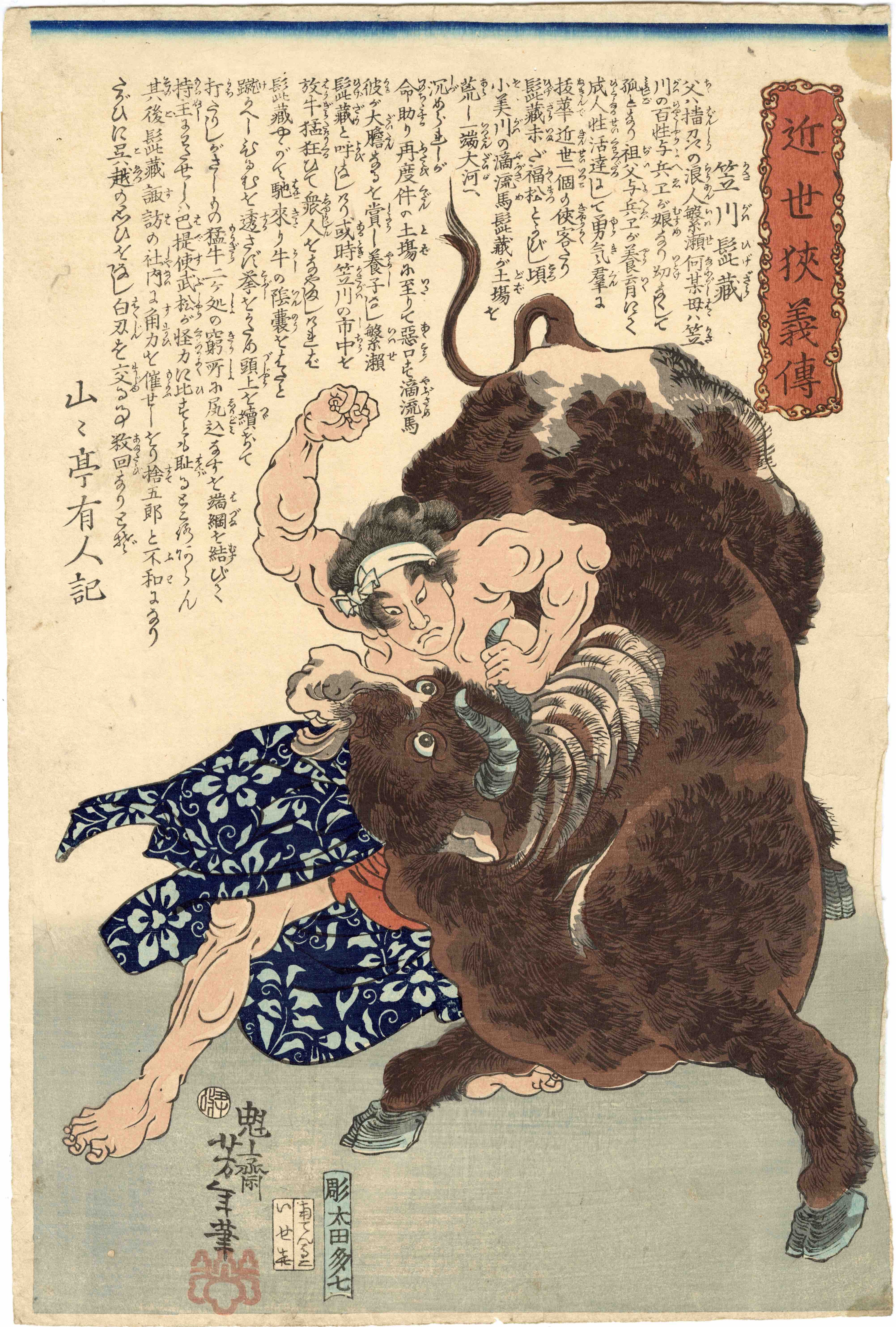- Collection
- Collection database
- Kasagawa Higezō
Kasagawa Higezō
Stories of Modern Chivalrous Men
Information
| Title | Kasagawa Higezō Kasagawa Higezō 笠川髭藏 |
| Series title | Stories of Modern Chivalrous Men 近世侠義傳 |
| Artist | Tsukioka Yoshitoshi 月岡芳年 (1839–1892) |
| Date | 10/1865 |
| Publisher | Iseya Kisaburō (Man’yōdō) 伊勢屋喜三郎 (万葉堂) |
| Woodcarver | Ōta Tashichi 太田多七 |
| City | Edo |
| Signature | Kaisai Yoshitoshi hitsu 魁齋芳年筆 |
| Artist seal | paulownia |
| Censorship seal(s) | aratame, Ox 10 改丑十 |
| Publisher’s seal(s) | Nantenma 2 Ise-Ki 南てん馬二いせ喜 |
| Blockcutter’s (and/or) printer’s) seal(s) | hori Ōta Tashichi 彫太田多七 |
| Inscription | 父は播刕の浪人䌓瀬何某母は笠川の百姓与兵エが娘なり幼なして孤となり祖父与兵エが養育にて成人活達にして勇気羣に抜華近世一個の侠客たり髭藏未だ福松とよびし頃小美川の滴流馬髭藏が土場を荒し一端大河へ沈められしが命助り再度件土場に至りて悪口す鏑流馬彼が大膽なるを賞し養子なし䌓瀬髭藏と呼なしけり或時笠川の市中を放牛猛狂ひて衆人をなやみしければ髭藏やがて馳来り牛の隂嚢をはたと蹴りへしひなむを透さず拳をかため頭上を續きて打たりしがさしもの猛牛二ヶ処の窮所に㞍込なすを端綱を結びて持王にわたせしは巴提使武松が怪力に比すとも耻るところあらん。その後髭藏諏訪の社内に角力を催せしをり捨五郎と不和になり。たがひに呉越の思ひをなし白刃を交る事数回なりとぞ [Kasagawa Higezō = Sasagawa Shigezō] His father was a rōnin, one Iwase from Harima Province [present-day Hyōgo Prefecture] and his mother was the daughter of Yohei, a farmer from Kasagawa [= Sasagawa]. He was orphaned at a young age and his grandpa Yohei raised him. He joined the Yūki Gang ["Gang of Courage"] as a young man, where he excelled as a true kyōkaku [rough yet chivalrous strongman] of this age. When Higezō [= Shigezō] was still known as Fukumatsu he once caused a ruckus in the gambling den of Yabusame Higezō [= Yabusame Shigezō] at Omigawa, which led to him being thrown into the river [getting wrapped in a reed mat and thrown into the river was a method of lynching in these times]. But when he escaped death he immediately returned to the gambling den and hurled some verbal abuse at his assailants, Yabusame appreciated his guts [daitan 大膽 = literally ‘large gall bladder’] and decided to adopt him. From then on he was known as Iwase Higezō. Once upon a day a raging bull went on a rampage in the middle of the Kasagawa market. Higezō came running to the rescue and kicked the animal in the scrotum with all his might. Without a moment of hesitation he made a fist and began to pound the rampaging bull's head. While the bull was startled and dazed, Higezō bound its head in a halter and brought the animal back to its owner. That was a feat of strength that surely would have put Hadesu and Bushō to shame [Kashiwade no Hadesu, fl. 6e eeuw, famous for killing a tiger in Korea, and Bushō (C: Wu Song), one of the 108 heroes from Water Margin (Suikoden), who also kills a tiger in the story]. Later Higezō organised a sumo competition on the grounds of the Suwa Shrine [Suwa Daijin in Sasagawa]. During the conflict with Sutegorō [= Iioka no Sukegorō] they became bitter enemies [goetsu 呉越] and crossed swords several times. Written by Sansantei Arindo [= Jōno Saigiku, 1832–1902] |
| Technique & material | Woodblock print; full colour print; pigment on paper |
| Format | ōban |
| Object number | SH2018-DM-138 |
| Credit Line | Schenking Muck en Mieke Douma |
| Provenance | In april 2018 geschonken aan Japanmuseum SieboldHuis door Muck en Mieke Douma |
Description
Stories of Modern Chivalrous Men is a series of 36 designs Yoshitoshi made early on in his career. The set revolves around two rival gambling gangs that clashed in a bloody turf war during the 1840s, in around the area of the Tone River bedding in present-day northeastern Chiba Prefecture. The two gangleaders (oyabun) were Iioka no Sukegorō (1792–1859) and Sasagawa no Shigezō (1810–1847), their names derived from their turfs around Iioka Beach and the Sasa Riverbed. In the texts written by light novel author Sansantei Arindō (real name Jōno Saigiku, 1832–1902) the two rivals were renamed Sutegorō and Higezō to avoid censorship. Their feud continued for a couple of years until Sukegorō had Shigezō assassinated in 1847, in such an underhanded way that even some of his underlings (kobun) disliked it. A few of Shigezō's henchmen, including his successor Seiriki no Tomigorō, wanted to retaliate and attacked Sukegorō but failed, and Tomigorō committed suicide when he was surrounded by Sukegorō's men. The conflict seems to have stopped afterwards. The turf war was on such a large scale that it caught the attention of the Edo populace and reminded them of the large-scale samurai battles of old. It was soon heralded by professional storyteller (kōdanshi) Takarai Kinryō I as the "Suikoden of the Tenpō Era", referring to the extremely popular novel Suikoden (Water Margin) about 108 heroic bandits who defied the corrupt authorities. The Japanese of the Edo period loved rough strongmen with a disregard for authority, and later a kabuki play based on these events was performed in Edo, turning the gambling kingpins and their followers into exaggeratedly strong, rough, yet noble characters. Yoshitoshi followed suit, and depicts them displaying superhuman feats of strength, with the texts emphasizing their chivalry and kind-heartedness.
Here Sasagawa Shigezō (also known as Iwase Shigezō, and here under the pseudonym Kasagawa Higezō) is shown wrestling with a raging bull and is about to give the animal a hard smack on its head. The text sheds some light on Shigezō's life, including the incident with the bull. (see Inscription)


